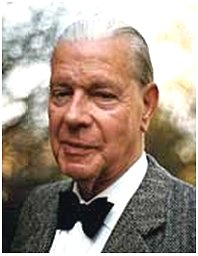

Maximiliaan Julius Otto (Max) Strutt was born the 3rd of October 1903 in Poervasari Indonesia. He started his high-school in Djokjakarta (Indonesia) and finished it in Augsburg (Germany). He studied at the Technical University in Munich from 1921 to 1923, and he received a master degree both from the University of Munich as well as from the Technical University of Delft. From 1926 to 1927 he was an assistant to prof. Fokker. Max Strutt must have been a brilliant student since on the 28th of June 1927 on the age of 24 he receives his PhD on a dissertation entitled ?Skineffect en temperatuurverdeling in electrische geleiders,? (Skin effect and temperature distribution in electrical conductors).
Two months before receiving his PhD he joins Philips Research on the 1st of May 1927 in the group of Ekko Oosterhuis (practical radio). Strutt was a high productive scientist with an enormous output. From 1927 to 1946 he published as least 50 Internal Research Reports (Technical Notes), several books and a large number of Journal and Conference contributions. Striking is the broad range of topics ranging including: electr-accoustics, tubes configurations, tube measurements, losses in dielectrics, antennas, high voltage power distribution, RF circuits and telephone cables. Strutt Could also be very pigheaded. Before say 1935, most scientists at Philips Research published in German Journals since German was in those years the scientific language. However, when Hitler came to power, most Scientist at Philips changed from German to English. Stubbornly, Strutt continued to publish in German. According to A.E. Pannenborg, this made him rather impossible with his colleagues.
Then immediately after the war, the career of Strutt makes an unexpected turn when on the 1st of April 1946 he is transferred to the Tube Lab “Radio I.” At Philips Research it was the rule that scientists after working for a period of 5 to 6 years at the Research Lab moved to one of the production of development enters. Only the top 10% of academics was allowed to stay and became a senior of even a fellow scientist. Max Strutt stayed for almost twenty years with the Research Lab and then very unexpectedly moved to one of the development sites. The reason for this move has not been recorded, but one is tempted to speculate that it may have had to do with the man’s sympathy for the German occupiers. In any case, for a man of Strutt’s standing it must have felt as a demotion and a humiliation.
Strutt stay with the Radio Lab does not last longer than one and a half year for in 1948 he takes the chair of “Professor Ordinarius für theoretische Electrotechnik” at the ETH in Zurich Switserland and from 1957 of “höhere Elektrotechnik.” Strutt remains a Professor at ETH until his retirement in 1974. Also at the University Strutt is able to maintain an astonishing output. A quick scan among on the IEEE server reveals no less than 76 papers covering topics as diverse as: spectroscopy, all facets of semiconductor modeling and characterization e.g.: noise, magnetoresistance, breakdown; laser diodes etc. His last co-authored paper dates from 1974. Max Strutt died in 1992 at the age of 89.